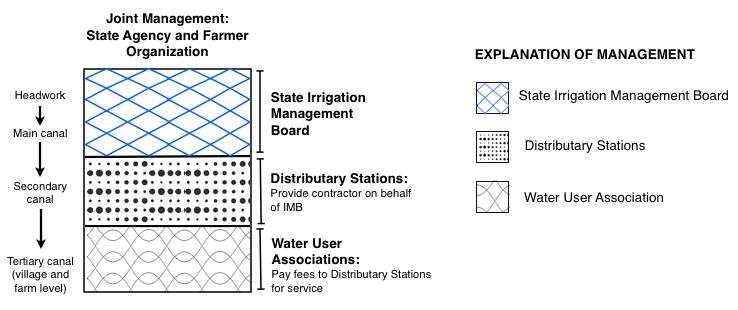 This working paper by the Council on Energy, Environment and Water aims at exploring the best methods that can be used for determining successful institutional reforms for Water Use Efficiency (WUE) in agriculture in the context of absolute water stress and relative water scarcity conditions across economic sectors for India. The paper does so by drawing on experiences based on attempts at reform undertaken by a number of countries facing similar circumstances such as China, Mexico and Turkey.
This working paper by the Council on Energy, Environment and Water aims at exploring the best methods that can be used for determining successful institutional reforms for Water Use Efficiency (WUE) in agriculture in the context of absolute water stress and relative water scarcity conditions across economic sectors for India. The paper does so by drawing on experiences based on attempts at reform undertaken by a number of countries facing similar circumstances such as China, Mexico and Turkey.
The paper sets up a framework that combines water availability, water use, and institutions and capacities as the three key indicators for comparing institutional reforms for WUE across countries. It explores these indicators using international case studies with varied institutional reform approaches and then defines the needs and priorities for India at different institutional levels. The paper argues that this approach requires focusing on elements common to all systems such as water, land, and crop production.
This paper seeks to identify successful water institutional reforms and best practices that have improved WUE in several countries including, but not limited to, China, Turkey and Mexico, in order to make recommendations for India’s national, regional and local water institutions. The paper is structured around two critical questions:
- What are the different institutional reforms that have been successful in other countries that India can learn from?
- Can a multidisciplinary approach and multi stakeholder engagement process to water management improve WUE?
The paper is divided into the following sections:
- Part 1 provides a descriptive and technical background on WUE and explores the complexities of understanding water use in different interest spectrums such as farmers, policymakers, and engineers
- Part 2 explains the methodology used to assess successful water management institutional reform on the basis of three main sources, or “baskets,” of water use efficiency, namely water availability, water use, and institutions and capacity.
- Part 3 consists of case studies on water management institutional reforms primarily in China, Mexico, and Turkey as well as other countries, and their resulting WUE improvements
- Part 4 analyses water resource development in agriculture in India over the last 20 years setting the stage for best practices for reform for India. It introduces innovative institutional reforms that could be implemented using best practices from countries in the selected case studies. Part 4 also synthesises these best practices and provides policy recommendations relevant for India’s case.
The paper ends by outlining three innovative institutional design options and policy recommendations focused on three issues: greater local participation in irrigation management, capacity building for water management decisions, and better understanding of hydrologic principles. The paper argues that none of the institutional options namely, shared management, joint management, and village level management is perfect, but each provides opportunities for a multidisciplinary, collaborative process to water management. The models are relevant not only for improving participatory irrigation management in India, but could also serve as the basis for more in depth cross-country research in future.
The paper concludes that:
- Application of hydrologic indicators across regions provides beneficial information on the differences in rainfall variability and relative water availability
- An important parameter to determine irrigation management calculations such as equity in water distribution is effective rainfall. Irrigation in the winter season, with very little rainfall changes differs from high water demand seasons such as the summer. Therefore, the method used to calculate effective rainfall becomes very important and must be standardised across systems
- The absence of scientific data greatly compromises efforts to compare across countries with regions in India because of its variable geographic and agro-climatic zones. These data gaps should be addressed and resolved for comparison purposes and to identify the implications for irrigation management policy options (such as the way long-term planning for irrigation distribution is calculated)
- Scientific and social indicators are complementary. Application of both types of indicators proved to be useful to gain better understanding of the dynamics of institutional reform and irrigation management by regional managers and farm-level water users
- To maximise WUE and minimise conflict among water users, water resource management must be conducted along hydrologic boundaries. Matching the administrative (political) boundaries and natural (hydrologic) boundaries is one of the most challenging issues in water resource management. Nevertheless, this system is necessary not only for management purposes but for consistent scientific data collection over time to inform decision-making.
The paper ends by providing a synthesis of best practices for India and recommendations for institutional reforms
A copy of the paper can be accessed at this link
/articles/institutional-reform-water-use-efficiency-agriculture-international-best-practices-and